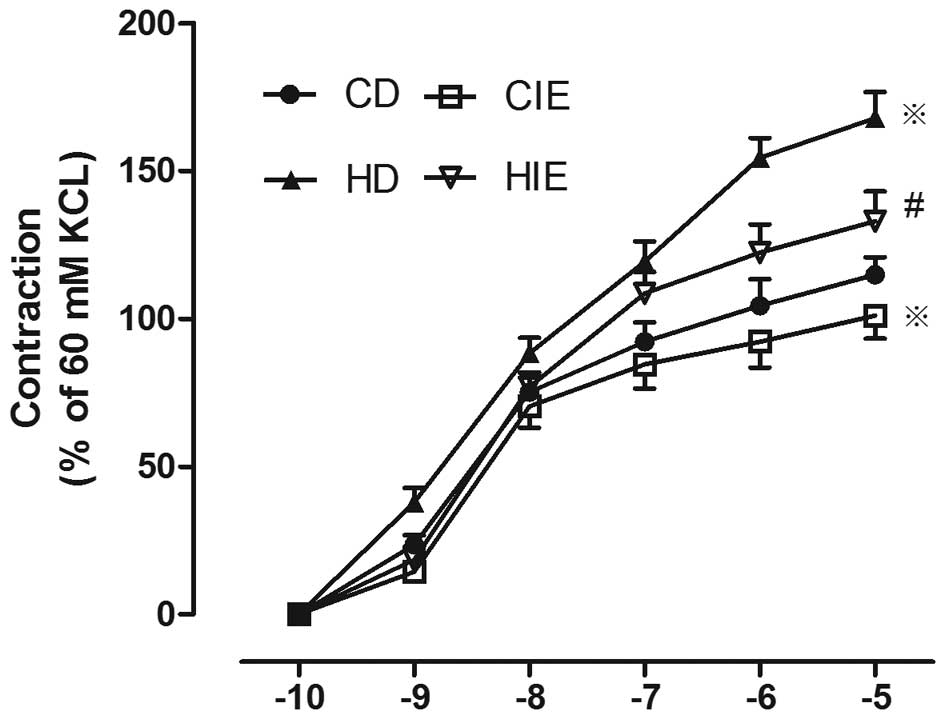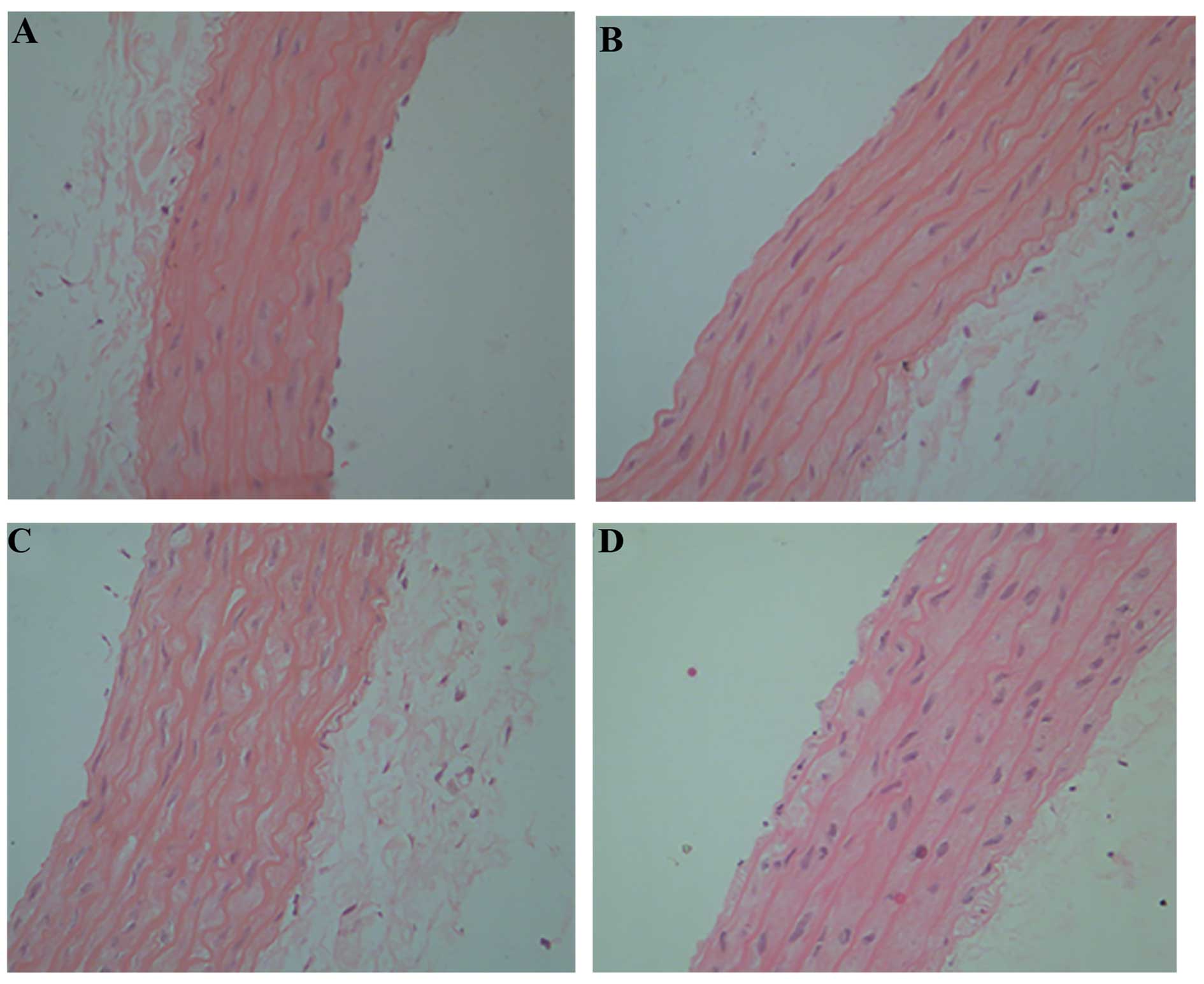|
1
|
World Health Organization (WHO): Obesity:
Prevention and management the global epidemic. Report of the WHO
consultation. World Health Organization. (Geneva). 1998.
|
|
2
|
Schmermund A and Möhlenkamp S: No paradox:
Relationship between obesity and coronary atherosclerosis. Eur
Heart J Cardiovasc Imaging. 14:928–929. 2013. View Article : Google Scholar : PubMed/NCBI
|
|
3
|
Després JP: Body fat distribution and risk
of cardiovascular disease: An update. Circulation. 126:1301–1313.
2012. View Article : Google Scholar : PubMed/NCBI
|
|
4
|
Rosa EC, Zanella MT, Ribeiro AB and
Kohlmann Junior O: Visceral obesity, hypertension and cardio-renal
risk: A review. Arq Bras Endocrinol Metabol. 49:196–204. 2005.(In
Portuguese). View Article : Google Scholar : PubMed/NCBI
|
|
5
|
Tock L, Prado WL, Caranti DA, Cristofalo
DM, Lederman H, Fisberg M, Siqueira KO, Stella SG, Antunes HK,
Cintra IP, et al: Nonalcoholic fatty liver disease decrease in
obese adolescents after multidisciplinary therapy. Eur J
Gastroenterol Hepatol. 18:1241–1245. 2006. View Article : Google Scholar : PubMed/NCBI
|
|
6
|
Van Gaal LF, Mertens IL and De Block CE:
Mechanisms linking obesity with cardiovascular disease. Nature.
444:875–880. 2006. View Article : Google Scholar : PubMed/NCBI
|
|
7
|
Hall JE, Crook ED, Jones DW, Wofford MR
and Dubbert PM: Mechanisms of obesity-associated cardiovascular and
renal disease. Am J Med Sci. 324:127–137. 2002. View Article : Google Scholar : PubMed/NCBI
|
|
8
|
Marinou K, Tousoulis D, Antonopoulos AS,
Stefanadi E and Stefanadis C: Obesity and cardiovascular disease:
From pathophysiology to risk stratification. Int J Cardiol.
138:3–8. 2010. View Article : Google Scholar : PubMed/NCBI
|
|
9
|
Poirier P, Giles TD, Bray GA, Hong Y,
Stern JS, Pi-Sunyer FX and Eckel RH: Obesity and cardiovascular
disease: Pathophysiology, evaluation, and effect of weight loss.
Arterioscler Thromb Vasc Biol. 26:968–976. 2006. View Article : Google Scholar : PubMed/NCBI
|
|
10
|
Hubert HB, Feinleib M, McNamara PM and
Castelli WP: Obesity as an independent risk factor for
cardiovascular disease: A 26-year follow-up of participants in the
Framingham Heart Study. Circulation. 67:968–977. 1983. View Article : Google Scholar : PubMed/NCBI
|
|
11
|
Westerterp KR: Perception, passive
overfeeding and energy metabolism. Physiol Behav. 89:62–65. 2006.
View Article : Google Scholar : PubMed/NCBI
|
|
12
|
Jeppesen J and Kiens B: Regulation and
limitations to fatty acid oxidation during exercise. J Physiol.
590:1059–1068. 2012. View Article : Google Scholar : PubMed/NCBI
|
|
13
|
Jia B, Wang X, Kang A, Wang X, Wen Z, Yao
W and Xie L: The effects of long term aerobic exercise on the
hemorheology in rats fed with high-fat diet. Clin Hemorheol
Microcirc. 51:117–127. 2012.PubMed/NCBI
|
|
14
|
Teixeira A, Müller L, dos Santos AA,
Reckziegel P, Emanuelli T, Rocha JB and Bürger ME: Beneficial
effects of gradual intense exercise in tissues of rats fed with a
diet deficient in vitamins and minerals: A pilot study. Nutrition.
25:590–596. 2009. View Article : Google Scholar : PubMed/NCBI
|
|
15
|
Tjønna AE, Lee SJ, Rognmo Ø, Stølen TO,
Bye A, Haram PM, Loennechen JP, Al-Share QY, Skogvoll E, Slørdahl
SA, et al: Aerobic interval training versus continuous moderate
exercise as a treatment for the metabolic syndrome: A pilot study.
Circulation. 118:346–354. 2008. View Article : Google Scholar : PubMed/NCBI
|
|
16
|
Stephen H: Boutcher: High-intensity
intermittent exercise and fat loss. J Obes. 5:1–10. 2011.
|
|
17
|
Carnevali LC Jr, Eder R, Lira FS, Lima WP,
Gonçalves DC, Zanchi NE, Nicastro H, Lavoie JM and Seelaender MC:
Effects of high-intensity intermittent training on carnitine
palmitoyl transferase activity in the gastrocnemius muscle of rats.
Braz J Med Biol Res. 45:777–783. 2012. View Article : Google Scholar : PubMed/NCBI
|
|
18
|
Haghshenas R, Jafari M, Ravasi A, Kordi M,
Gilani N, Shariatzadeh M, Hedayati M and Rahimi M: The effect of
eight weeks endurance training and high-fat diet on
appetite-regulating hormones in rat plasma. Iran J Basic Med Sci.
17:237–243. 2014.PubMed/NCBI
|
|
19
|
Ebal E, Cavalie H, Michaux O and Lac G:
Effect of a moderate exercise on the regulatory hormones of food
intake in rats. Appetite. 49:521–524. 2007. View Article : Google Scholar : PubMed/NCBI
|
|
20
|
Elj NE, Lac G, Tabka Z, Gharbi N and Fezaa
SE: Effect of physical exercise on reducing food intake and weight
gain. Procedia Soc Behav Sci. 30:2027–2031. 2011. View Article : Google Scholar
|
|
21
|
Carroll JF, Thaden JJ, Wright AM and
Strange T: Loss of diurnal rhythms of blood pressure and heart rate
caused by high-fat feeding. Am J Hypertens. 18:1320–1326. 2005.
View Article : Google Scholar : PubMed/NCBI
|
|
22
|
Prasad K and Kalra J: Oxygen free radicals
and hypercholesterolemic atherosclerosis: Effect of vitamin E. Am
Heart J. 125:958–973. 1993. View Article : Google Scholar : PubMed/NCBI
|
|
23
|
Mahapatra S, Padhiary K, Mishra TK, Nayak
N and Satpathy M: Study on body mass index, lipid profile and lipid
peroxidation status in coronary artery disease. J Indian Med Assoc.
96:39–40, 42. 1998.PubMed/NCBI
|
|
24
|
Laurent S, Cockcroft J, Van Bortel L,
Boutouyrie P, Giannattasio C, Hayoz D, Pannier B, Vlachopoulos C,
Wilkinson I and Struijker-Boudier H: European Network for
Non-invasive Investigation of Large Arteries: Expert consensus
document on arterial stiffness: Methodological issues and clinical
applications. Eur Heart J. 27:2588–2605. 2006. View Article : Google Scholar : PubMed/NCBI
|
|
25
|
Swierblewska E, Hering D, Kara T, Kunicka
K, Kruszewski P, Bieniaszewski L, Boutouyrie P, Somers VK and
Narkiewicz K: An independent relationship between muscle
sympathetic nerve activity and pulse wave velocity in normal
humans. J Hypertens. 28:979–984. 2010. View Article : Google Scholar : PubMed/NCBI
|
|
26
|
Ewert P, Berger F, Nagdyman N, Kretschmar
O and Lange PE: Acute left heart failure after interventional
occlusion of an atrial septal defect. Z Kardiol. 90:362–366. 2001.
View Article : Google Scholar : PubMed/NCBI
|
|
27
|
Sinclair AJ, Barnett AH and Lunec J: Free
radicals and antioxidant systems in health and disease. Br J Hosp
Med. 43:334–344. 1990.PubMed/NCBI
|
|
28
|
Draper HH and Hadley M: Malondialdehyde
determination as index of lipid peroxidation. Methods Enzymol.
186:421–431. 1990. View Article : Google Scholar : PubMed/NCBI
|
|
29
|
Esterbauer H, Schaur RJ and Zollner H:
Chemistry and biochemistry of 4-hydroxynonenal, malonaldehyde and
related aldehydes. Free Radic Biol Med. 11:81–128. 1991. View Article : Google Scholar : PubMed/NCBI
|
|
30
|
Jenkins RR, Martin D and Goldberg E: Lipid
peroxodative in skeletal muscle during atrophy and acute exercise.
Med Sci Sports Exerc. 15:93–94. 1983. View Article : Google Scholar
|
|
31
|
Shan X, Zhou J, Ma T and Chai Q: Lycium
barbarum polysaccharides reduce exercise-induced oxidative stress.
Int J Mol Sci. 12:1081–1088. 2011. View Article : Google Scholar : PubMed/NCBI
|
|
32
|
Furchgott RF and Zawadzki JV: The
obligatory role of endothelial cells in the relaxation of arterial
smooth muscle by acetylcholine. Nature. 288:373–376. 1980.
View Article : Google Scholar : PubMed/NCBI
|
|
33
|
Abbott C, Meadows AB and Lier K: Low
cholesterol and noncardiovascular mortality. Mil Med. 165:466–469.
2000.PubMed/NCBI
|
|
34
|
Rybin VO and Steinberg SF: Protein kinase
C isoform expression and regulation in the developing rat heart.
Circ Res. 74:299–309. 1994. View Article : Google Scholar : PubMed/NCBI
|
|
35
|
Lira FS, Carnevali LC Jr, Zanchi NE,
Santos RV, Lavoie JM and Seelaender M: Exercise intensity
modulation of hepatic lipid metabolism. J Nutr Metab.
2012:8095762012. View Article : Google Scholar : PubMed/NCBI
|












